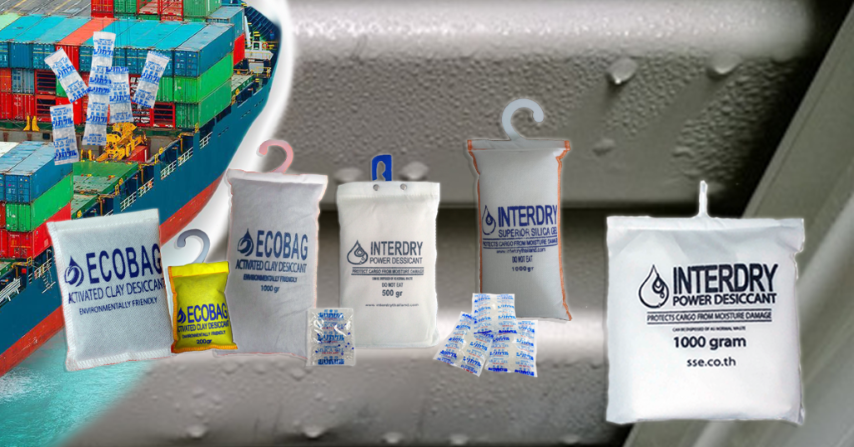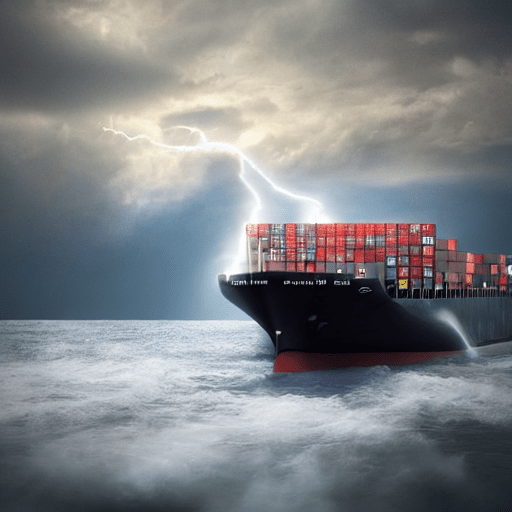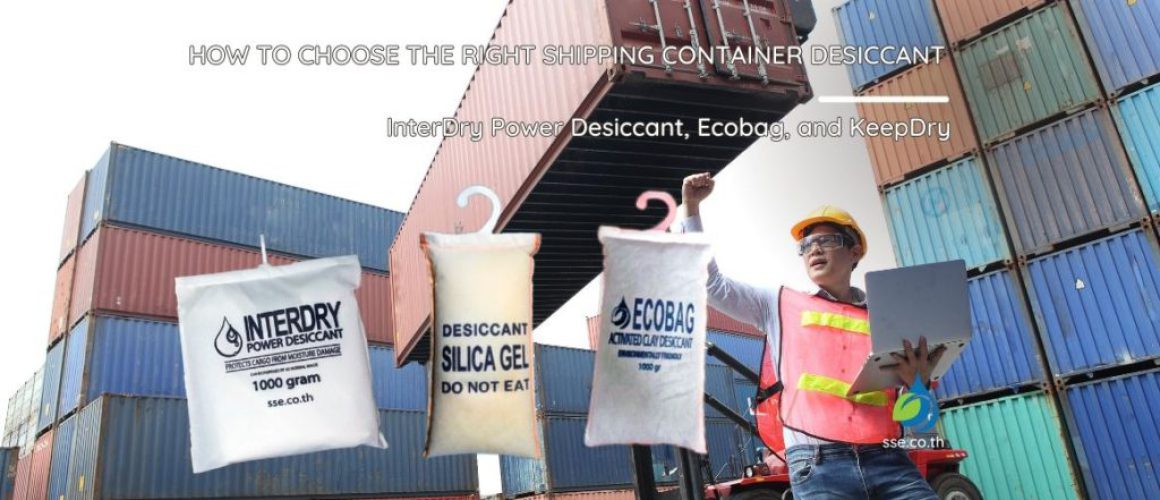How to Choose the Right Shipping Container Desiccant for Your Cargo
Table of Contents
I. Introduction to Container Desiccant
Shipping cargo worldwide comes with various challenges, one of the most common being the issue of moisture and humidity control. The success of your shipment depends on the protection of your cargo from damaging effects of moisture, such as mold, corrosion, and condensation. That’s where container desiccants come into play. These powerful moisture-absorbing materials are designed to maintain a safe environment within the shipping container, protecting your cargo from the damaging effects of humidity during transit. In this guide, we will discuss the importance of container desiccants, how they work, and their role in preserving the quality and value of your goods. By understanding the different types of desiccants available and their unique properties, you’ll be better equipped to make an informed decision when choosing the right desiccant for your shipping needs.
II. Understanding the Importance of Desiccants
Container desiccants, or container moisture bags, play a crucial role in protecting cargo from moisture damage, which can lead to mold, corrosion, and other forms of degradation.
A. Moisture and humidity challenges in container shipping
During the transportation of goods in shipping containers, various factors, such as changing temperatures and fluctuating humidity levels, can lead to the accumulation of moisture inside the container. This excess moisture can cause condensation, which can damage the cargo, resulting in significant financial losses.
B. The role of desiccants in preserving cargo quality
Desiccants are substances that absorb moisture from the air, helping to maintain a stable humidity level inside the container. By doing so, desiccant bags for shipping containers prevent the formation of condensation and protect the cargo from moisture-related damage.
III. Common Types of Shipping Container Desiccants
There are several types of container desiccant bags available in the market, each with its own unique properties and benefits, including InterDry Power Desiccant, Ecobag, and KeepDry.
A. InterDry Power Desiccant
InterDry Power Desiccant is a highly absorbent product designed to protect cargo from moisture damage during shipping. It can absorb more than 200% of its weight in moisture, making it one of the most efficient shipping container moisture absorber on the market. The product is packed in special Tyvek and Spunbond packaging, ensuring leak-proof performance and one-way absorption.
B. Ecobag
Ecobag is a container desiccant made from a blend of Attapulgite, Bentonite, and Calcium Chloride. It is packed in a spunbond bag with a convenient hook, making it easy to install in shipping containers. Ecobag is available in various sizes and can absorb between 50-60% of its own weight in moisture.
C. KeepDry
KeepDry is a shipping container desiccant consisting of 100% silica gel beads. It is packed in a spunbond bag with a hook for easy installation. KeepDry is available in several sizes and can absorb around 35% of its own weight in moisture.

IV. Factors to Consider When Choosing a Container Desiccant
When selecting the most suitable desiccant for storage containers for your cargo, several factors should be considered, including the type of cargo, shipping conditions, and the desiccant’s performance.
A. Type of cargo
The type of goods being shipped will determine the level of moisture protection required. For instance, moisture-sensitive items such as electronics, textiles, and food products may require a higher level of protection compared to less sensitive cargo like metals or plastics.
B. Shipping conditions and duration
The shipping route, duration, and climate conditions can also impact the effectiveness of a desiccant. Longer shipping durations and extreme weather conditions may require a more absorbent desiccant to maintain optimal humidity levels within the container.
C. Desiccant performance and absorption capacity
The performance of a desiccant is largely determined by its absorption capacity. A higher absorption capacity means that the desiccant can effectively protect the cargo from moisture damage for a longer period of time. When comparing desiccants, consider their absorption capacities relative to their weight and the size of the container.
D. Environmental impact and sustainability
Some desiccants may have a lower environmental impact than others. For instance, certain desiccants are biodegradable or can be recycled, making them a more sustainable choice. Consider the environmental impact of the desiccant when making your selection.
E. Cost-effectiveness
When choosing a desiccant, it is essential to consider its cost-effectiveness. This includes not only the initial purchase price but also factors such as the amount needed per container and the cost of disposal. A more absorbent desiccant may require fewer units, saving you money in the long run.
V. Comparing InterDry Power Desiccant, Ecobag, and KeepDry
To help you make an informed decision, let’s compare the three popular shipping container desiccants: InterDry Power Desiccant, Ecobag, and KeepDry.
A. Absorption capacity
InterDry Power Desiccant has the highest absorption capacity of the three, capable of absorbing more than 200% of its weight in moisture. Ecobag follows with a capacity of 50-60%, and KeepDry can absorb around 35% of its own weight.
B. Packaging and ease of use
All three cargo desiccant bags come in spunbond bags with hooks for easy installation in shipping containers. InterDry Power Desiccant also features Tyvek packaging, which ensures one-way absorption and leak-proof performance.
C. Environmental considerations
InterDry Power Desiccant, Ecobag, and KeepDry are all non-toxic and safe to use with various types of cargo, including food products and agricultural goods. However, it is essential to check local regulations for disposal and recycling options for each desiccant type.
D. Price and cost-effectiveness
While the initial cost of each desiccant may vary, it is crucial to consider the overall cost-effectiveness. InterDry Power Desiccant’s high absorption capacity may require fewer units per container, potentially leading to cost savings in the long run.
VI. Making the Right Choice for Your Shipping Needs
Choosing the right container desiccant for your cargo requires careful consideration of various factors such as the type of cargo, shipping conditions, desiccant performance, environmental impact, and cost-effectiveness. By evaluating these factors and comparing the available options, you can select the most suitable desiccant to protect your goods during transportation.

VII. Conclusion: Safeguarding Your Cargo with the Right Desiccant
Ultimately, selecting the right shipping container desiccant is crucial for maintaining the quality and safety of your cargo. By understanding the unique properties of InterDry Power Desiccant, Ecobag, and KeepDry, and considering the factors discussed in this guide, you can make an informed decision that best suits your shipping needs and cargo requirements.
VIII Frequently Asked Questions
What is a container desiccant?
A container desiccant is a substance used to control moisture levels inside shipping containers, protecting cargo from damage caused by humidity, mold, mildew, and corrosion. Desiccants absorb excess moisture from the air, helping to prevent condensation and maintain optimal humidity levels during transit.
What are the three types of desiccant?
The three types of desiccants commonly used in shipping containers are silica gel, calcium chloride, and clay-based desiccants such as attapulgite and bentonite. Each type of desiccant has different absorption capacities and properties, making them suitable for various applications and shipping conditions.
What is the best desiccant for shipping containers?
The best desiccant for shipping containers depends on the specific needs of your cargo and shipping conditions. Factors to consider include the type of cargo, the shipping route, duration, and environmental conditions. InterDry Power Desiccant, Ecobag, and KeepDry are three popular shipping container desiccants, each with unique properties and benefits.
What is the most cost-effective desiccant?
The most cost-effective desiccant depends on the specific requirements of your cargo and shipping conditions. While initial costs may vary, it’s essential to consider overall cost-effectiveness, including the number of units required per container and disposal costs. Desiccants with higher absorption capacities, like InterDry Power Desiccant, may require fewer units per container, potentially leading to cost savings.
What is an alternative to silica desiccant?
Alternatives to silica desiccant include calcium chloride-based desiccants like InterDry Power Desiccant and clay-based desiccants like Ecobag, which contains attapulgite and bentonite. These alternatives have different absorption capacities and properties, making them suitable for various applications.
How do I determine the right amount of desiccant for my shipping container?
To determine the right amount of desiccant for your shipping container, consider factors such as the type of cargo, container size, duration of transit, environmental conditions, and the specific absorption capacity of the chosen desiccant. Consult the desiccant manufacturer or a cargo preservation expert for guidance on calculating the optimal amount for your needs.
How should I dispose of used desiccants?
Disposal methods for used desiccants vary depending on the desiccant type and local regulations. Always check local guidelines for proper disposal procedures. In some cases, used desiccants may be recyclable or require special handling for disposal.
Can I reuse desiccants in my shipping containers?
Reusing desiccants is generally not recommended, as their absorption capacity decreases with each use. Once a desiccant reaches its maximum absorption capacity, it will no longer effectively protect your cargo. It is best to use fresh desiccants for each shipment to ensure optimal moisture control.
What is dew-point?
Dew-point is the temperature at which air becomes saturated with moisture and water vapor starts to condense into liquid droplets. When the temperature inside a shipping container drops below the dew point, condensation can occur, leading to potential cargo damage.
What is relative humidity?
Relative humidity is the ratio of the current amount of moisture in the air to the maximum amount of moisture the air can hold at a given temperature. It is expressed as a percentage. Controlling relative humidity inside shipping containers is crucial to protect the cargo from moisture.
How do you keep a container moisture free?
To keep a container moisture-free, use an appropriate desiccant to absorb excess moisture from the air. Additionally, ensure proper ventilation and temperature control to prevent condensation, and consider using moisture-resistant packaging materials.
What can I put in a container to absorb moisture?
To absorb moisture in a container, use a suitable desiccant, such as silica gel, calcium chloride, or clay-based desiccants. These substances effectively absorb excess moisture from the air, helping to protect your cargo from moisture-related damage.
How do you moisture-proof a shipping container?
To moisture-proof a shipping container, use an appropriate desiccant to control humidity, ensure proper ventilation, and maintain a stable temperature to prevent condensation. Additionally, use moisture-resistant packaging materials to protect your cargo.
How do you remove humidity from a container?
To remove humidity from a container, use a suitable desiccant that absorbs excess moisture from the air. Ensure proper ventilation and temperature control to prevent condensation and maintain optimal humidity levels.
How do you climate control a shipping container?
Climate control in a shipping container can be achieved by using desiccants to manage humidity, proper ventilation to maintain air circulation, and insulation or temperature control systems to regulate temperature.
The Ultimate Guide to Shipping Container Desiccants: InterDry Power Desiccant, Ecobag, and KeepDry
https://sse.co.th/the-ultimate-resource-for-shipping-container-desiccants/
